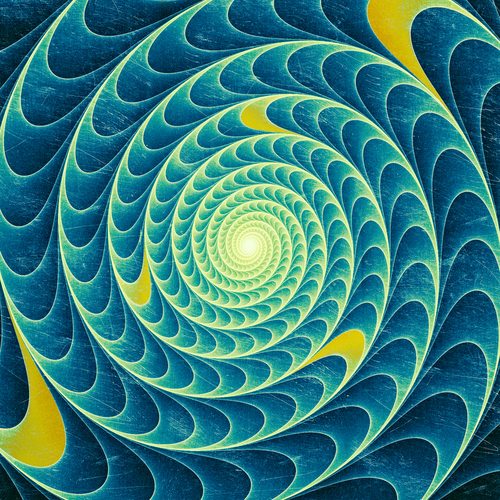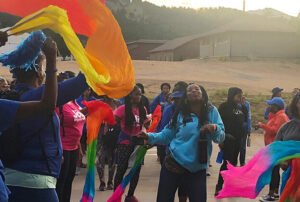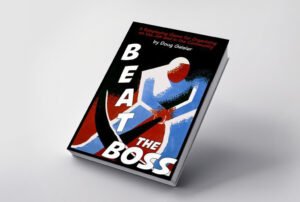
Adapted from the keynote speech for the Buffalo Society of Artists Annual Meeting, November 6, 2013.
Part 1: Must “Real” Art Come From “Crazy?”
I’m something of an anomaly in two worlds: I’m a working poet with two books published and a Master’s Degree in Creative Writing in one world, and I’m an executive vice president of a major charitable foundation in another. Neither world quite knows what to do with me, and so I am a member of both but belong fully to neither. So I want to talk with you this evening first as an artist to fellow artists, which is a rare opportunity for me, and then as a foundation executive to an organization, which is not so rare.
Two aspects of being an artist have dogged me since I first started writing bad rock ’n’ roll lyrics when I was 14 and in an enthusiastically bad “prog rock” garage band, and they still dog me to greater or lesser degrees today. The first has to do with whether an artist is or needs to be in some way “crazy”—or perhaps it’s more polite to say “uniquely attuned” to the world—in order to create “real” art. The second is whether the art created must in some way be “political,” or “challenging,” or in some other way oppositional to the existing social order of the world to be considered “valid.” Is it possible, that is, to be an “unpolitical” or “apolitical” artist and create relevant work? And to whom, then, would it be relevant?
I think it’s safe to say that thousands of books and meditations have been written over the centuries about the mental state of the artist. A general summary might be that there seems to be a connection between “crazy” and “art—except when there isn’t. None of this can be defined in any reliable way, from what it means to be crazy to what can be considered real or valid art. In reality, my chief concern, which I suspect is the case for many of us, turns out to have been whether I was actually crazy, whatever that meant. That’s why my double major in undergrad life was English and Psychology. I didn’t want to be a psychologist; I just wanted to know whether I was crazy. And if so, and if I liked making art in the form of poetry, should I be looking to “fix” myself? And if I “fixed” myself, would I lose my ability or desire to make art?
It became a pretty vicious circle. It wasn’t until I was in my 30s with a fair bit of rough life behind me that I acknowledged that something really wasn’t right, and I began my ongoing struggle with the world of mental health care. I started counseling, I was christened with a diagnosis of chronic depression (“dysthymia”), and it was recommended that I begin taking medication. This last piece really threw me, and I resisted it strongly for many reasons, not the least of which was that I had always been ordered to “get over it,” that “giving in to it” was a sign of weakness, especially for men. But more than that, what really scared me about taking meds was that they would cause me to lose my ability to write poetry. If all my emotions were leveled, how would I be able to access what was raging inside me and get it out in some form that was acceptable, even good? Despite the difficulty I was having getting through my days, that fear kept me from beginning meds for years, and led me, one day, to give in, exhausted, if for no other reason than to see what meds would do. What happened, in a nutshell, was that I was able to pull out of the cycle and my own tight skin, regain a sense of emotional balance, and keep writing. I am, as they say in the lingo, “managed.”
During all this time, I was constantly with other artists who understood the struggle and who were also dealing with it in various ways. We talked a great deal about the roles of art and the artist, about art and revolution, art and economic privilege, whether making art was selfless or selfish. There was and is a common fear of losing “the vision” that allowed us to make art. This may have been unique to the times—the 80s, working off the last throes of the 60s and 70s—and we were very much under the spell of the artist as the true altered consciousness. No one in their right mind would be an artist, and that was our badge of honor.
It was pretty much at this point that I turned from what artists had to say about being crazy to what science had to say about it. I spent a lot of time, and still do, reading about science’s best guesses – and they are largely guesses—on how the brain works. How it forms, how it responds, and perhaps most important, why does it produce art, and why is there such a strong need for public expression of private thought?
Why do humans need to express what they’re thinking and feeling, and why do we need to hear and see what other humans are thinking and feeling? Is it only the extremes of thought and emotion that are of interest, or can more pedestrian thoughts and emotions also be valid expressions? It was largely the idea that only the extremes—“the art of the oppressed,” to put it into a single phrase—were valid that had caught me and many others in our struggle with what “real” art was or is. This was complicated by the more recent graduate school trap: the work of splitting the intellectual from the emotional, prioritizing mind over body, divorcing thought from act. In my field, Language Poetry supplanted the raging, physical poetry of feminism. Graduate school in English became strictly about criticism, not about creation.
I struggled for many years after that to reconcile the fact that I was a poet of emotion, of the body, of the physical in the world, with the fact that such poetry was increasingly viewed as self indulgent, hopelessly limited, and ultimately irrelevant as too personal, far too overdone, to be of interest. At the same time, the notions of “the personal is political” and “all politics are local” were strongly in the culture. I tried to push my work toward the political, whatever that meant, in an effort to be relevant to current culture just as I had tried to be intellectual to university culture. Ultimately, of course, I just gave up. It was then I finally decided that there simply was no such thing as an invalid creative expression, period.
And yet the question arises, even tonight: In revealing as much about myself and my struggle as I have, have I committed a political, public act, or a personal, self-indulgent act? My conclusion is that they are inseparable. I’m sharing this for the same reason that we all share what we do: We hope that it will resonate; that others will hear or see and respond.
Part of what I hope this audience in particular will respond to is the incredibly difficult struggle for so many people with mental health issues. The situation in this community, particularly for young people, is seriously appalling, and in many cases actually dire. Very few people, especially people “of influence,” like me, will speak about their own wrestling matches with their mental health so as to deflect the stigma. More need to speak up. An enormous amount needs to be done. And art has been, and can continue to be, part of this. In the same way that your member Gary Wolf has just completed his incredible artistic journey to bring attention to the lives of the homeless, so too can art and artists bring attention and perhaps some relief, to those who need this help.
I believe art is a language, as whole and rule-bound as any language, and I believe it is every human’s first language. Every other one is a second language. The need to communicate, to tell, to show, and thus connect, is a universal human need, and the language of art in all its forms is a universal language. Even though each of us sees differently, artistic expression in all of its forms, and human response in all of its forms, is the critical and continual background conversation that holds us together in a culture. If we relied much more on the universal language of art rather than the regional languages of politics, we would have a better chance at finding our common humanity, albeit in innumerable expressions. All art is personal. All art is political. All art is human.
Part 2: Must We Become a 501(c)3 to be “Relevant?”
I’ll turn now briefly to an issue I was asked to comment on: What should the future of the Buffalo Society of Artists be? Should you incorporate, become an organization with a social agenda, seek grants for programs, voice your concerns and solutions to the community? Or should you remain an unincorporated association, gathering irregularly to catch up with chitchat and wine? As always, the answer is, “It depends.” The real question being asked, I think, is whether BSA is somehow less relevant to the larger community than it could be if it changed?
From where I sit in the foundation world, and based on past experience in the nonprofit world, I would say there is more to lose by becoming an organization than not, which may surprise some of you. But I would base that statement on the following observations:
- Money changes everything. It just does. No matter the goodwill and best intentions of everyone involved, money will change the dynamics of the association. Second-guessing and dissent will become competitive sports.
- Money demands companionship in the form of more money. Once you get started, oh, it’s hard to stop. Getting more money requires someone dedicated to doing that, meaning payroll, an office, stuff for the office. Getting more money requires programs to sell to funders, meaning more payroll, more stuff, more time, more dissent and second-guessing.
- Money creates ties that bind. Suddenly, you need to be nice to people like me. Other people like me will be watching what you do. Particularly with regard to whatever political or advocacy aspirations you may have had going in, you suddenly need to be careful what you say.
- Once it becomes clear to everyone which group of people will control the money, everyone else will disappear. Or snipe. But in either case, the sense of camaraderie, of equality among peers, will take a hit. I’ve seen all these things happen more than a few times once the grant funds show up, and it is very hard to watch. The groups usually survive, but there is a cost to it. And the group changes.
On the other hand, if BSA is looking to become more public, or more involved, or more political, all you really need to do is decide that and do it. The best recent example of this is the formation of the Greater Buffalo Cultural Alliance. They have chosen not to incorporate, not to become a 501(c)3, and to limit their activity to advocacy and public education, and those are good things. It means they can pursue their agenda without any specific fear of reprisal from “money.” And if part of the thinking of BSA is to provide educational opportunities to kids, I would simply strongly encourage you to work with organizations already in existence, even if they aren’t perfect, to do that. Becoming an organization is a messy, distracting, and costly undertaking.
I would urge you all to reconsider what you can do within the framework you already have. Coming together to talk, socialize, commiserate, imagine, provoke, argue, and laugh has a deeply serious purpose. You should do that more often, more spontaneously. Imposing too much structure on that can backfire. Imposing a little more structure can take you much farther much faster than you may think. It’s far better, in my view, to have many people involved even a little, than a few people involved a lot. There are such things as big enough, open enough, agile enough, and relevant enough. The sense of obligation is very strong to evolve when the obligation, really, is to be here now, for and with each other. The politics, and the relevance, will take care of themselves.
I’ll close with a short poem from my first book:
Theory of Canvas and Frame
Sign up for our free newsletters
Subscribe to NPQ's newsletters to have our top stories delivered directly to your inbox.
By signing up, you agree to our privacy policy and terms of use, and to receive messages from NPQ and our partners.
Her finger’s skin is canvas,
oils worn in, rubbed, worked,
muted to impressions.
A theory she has
has to do with layer on
layers of paint: one on, then
scraped off then another one on;
the surface is fluid, changing
as though by motion of wind
randomly curling up pliable water
like paint. The surface, in theory,
is only diversion for this movement
spread beneath, seeping out to
edges of canvas, paper, water,
and past – and it’s here
the work’s real act lies hidden:
beneath, beyond what can be stretched
across a single, tenuous frame.
Thank you for the opportunity to talk with you tonight.
Paul T. Hogan is the executive vice president of the John R. Oishei Foundation.












